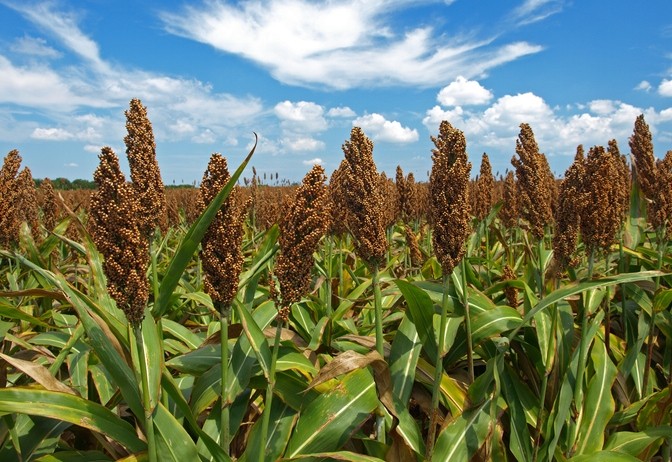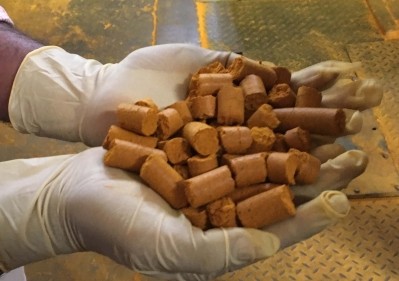Prebiotic potential of high tannin sorghum strains quantified in study

The new research was published in the journal Nature Communications. It was the work of a team led by Andrew Benson, PhD, head of the Food for Health Center at the University of Nebraska-Lincoln.
Poor bioavailability, but high effectiveness?
Polyphenols abound in many foodstuffs and most are noted for their poor bioavailability. Yet many of these poorly absorbed molecules nevertheless have been shown to exert health benefits. The theory is that these effects are conferred by the fermentation of these molecules in the lower GI tract and the resulting beneficial microbial metabolites to which they give rise.
A complicating factor is the wide variability of human microbiomes. If everyone’s gut is so different, relatively speaking, how can food scientists say with any precision what the mechanism of action might be in this fermentation scenario?
To try to quantify exactly what’s going on, the Nebraska team devised a high throughput screening system to test the effect of multiple different inputs across a range of host microbiomes (a future article will delve into more on the invention of and use of this system).
Sorghum’s unique tannin profile
The present study was designed to use the approach to look into the prebiotic potential in a number of different sorghum strains that are in the university’s rich germplasm library.
Benson told NutraIngredients-USA that sorghum is unique among the world’s great cereal grains (the others being maize, rice, wheat and barley, with sorghum occupying fifth place by annual tonnage produced) in that many strains still contain a significant amount of tannins. Most other cereal grains have had those traits bred out of them centuries ago, because the tannins generally are bitter.
Sorghum was native to the Sahel region of African and areas of the Fertile Crescent where the scant amount of rainfall was at the ragged edge of making cereal farming impossible. The plant’s drought tolerance is the same reason that sorghum cultivars are grown today in drier portions of the Great Plains in the United States.
In the case of sorghum, Benson said, the high tannin varieties conferred a distinct benefit that continued to be important right into modern times. Sorghum (Sorghum bicolor (L.) Moench) coevolved to some degree with a ubiquitous bird species in central and southern Africa known as the Red-billed Quelea (Quelea quelea).
These seed-eating, sparrow-like birds swarm over fields in dense, pulsating flocks resembling nothing so much as a rotary lawnmower blade. They can strip fields bare in minutes.
But the bitter taste of the high-tannin sorghum varieties make the seeds relatively unpalatable to the birds. Thus, most of the crop is spared their ravages.
Because of this benefit, a large number of high tannin varieties of sorghum still exist, which made the plant a good candidate for use in the present study.
Genomes mapped for hundreds of candidates
The Nebraska team cross bred a number of sorghum lines to obtain candidates for inclusion in the study. The genomes of these strains were sequenced and analyzed using Quantitative Trait Locus (QTL) mapping to find locations in the genomes predicted to correspond with activity in the actual fermentations.
The team then finely milled seeds from each of the sorghum strains (almost 300 in all). Using an automated system, they distributed the seed powers into containers of microbiome material cultured from stool samples taken from 12 individual donors.
“The microbiomes of the donors were fairly diverse, and their diets were diverse, too,” Benson said. “There was even some ethnic diversity, but not enough to include as a factor.”
The automated system, dubbed AiMS (automated in vitro microbiome screening) is what really made the study possible, Benson said.
“I can't feed you 300 different lines of sorghum and take a fecal sample from you every time you eat one,” Benson said. “What I can do is to replicate your microbiome, which is essentially a stool sample, and expose it to these inputs.”
Part of the system is a validated way to make the seed powder inputs resemble material that has already passed through the stomach and small intestine via various enzymatic reactions and filtration steps, Benson said.
The researchers mapped the specific genetic trains of the sorghum recombinant inbred lines (RILs) against the species of gut microbes favored in each of the thousands of different microbiome test samples. They also measured the production of short chain fatty acids (SCFAs) in each sample.
Genetic maps devised to predict outcomes in microbiome samples
In so doing, they were able to come up with a genome map of sorts that could predict how each individual RIL would affect the gut microbiome samples.
“Our QTL analyses revealed a complex, polygenic genetic architecture controlling seed traits that affect the human gut microbiome fermentation patterns, with ten significant QTLs affecting different combinations of microbial taxa, concentrations of microbial fermentation products (SCFAs),” the authors wrote.
Benson said an analogy of trying to parse out what parts the oboe and French horn might be playing within an orchestral cacophony isn’t far off the mark. The approach can be of use in looking for new purified prebiotic candidates as well as improving the gut health potential of whole seed grains, he said.
“While much work remains to validate effects of variation in these putative candidates, our study illustrates how complex trait analysis can be used to identify loci in food crops where genetic variation affects seed composition and fermentation patterns by the human gut microbiome. This approach can apply to any food crop to develop a comprehensive catalog of seed traits that affect the human gut microbiome. We believe such approaches will also pave the way for use of seed traits with major effects on beneficial gut microbes as traits for crop improvement strategies that can have profound outcomes with respect to human health,” the study concluded.
Source: Nature Communications
13, Article number: 5641 (2022)
Genetic analysis of seed traits in Sorghum bicolor that affect the human gut microbiome
Authors: Yang Q, Van Haute M, Korth N, et al.
















